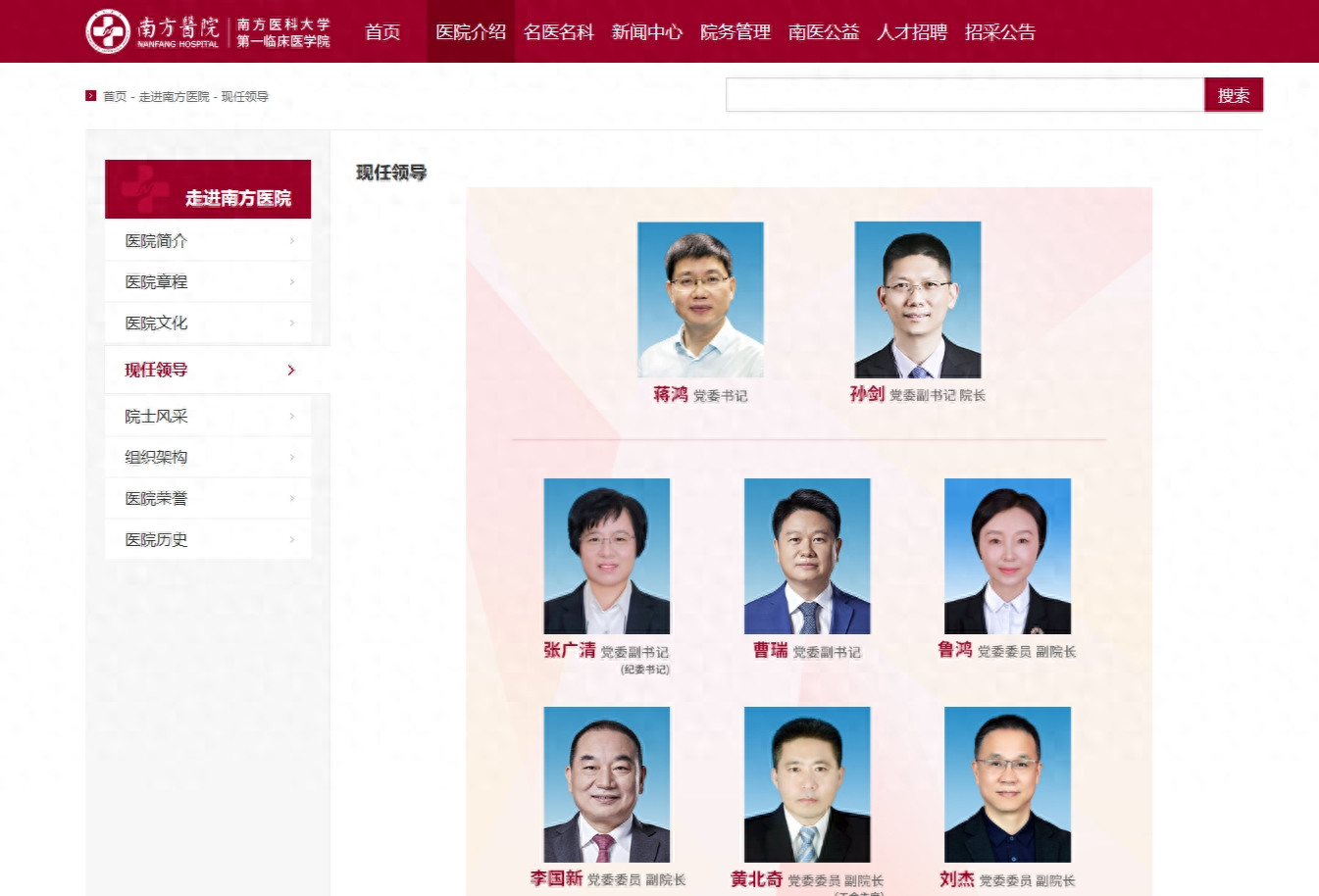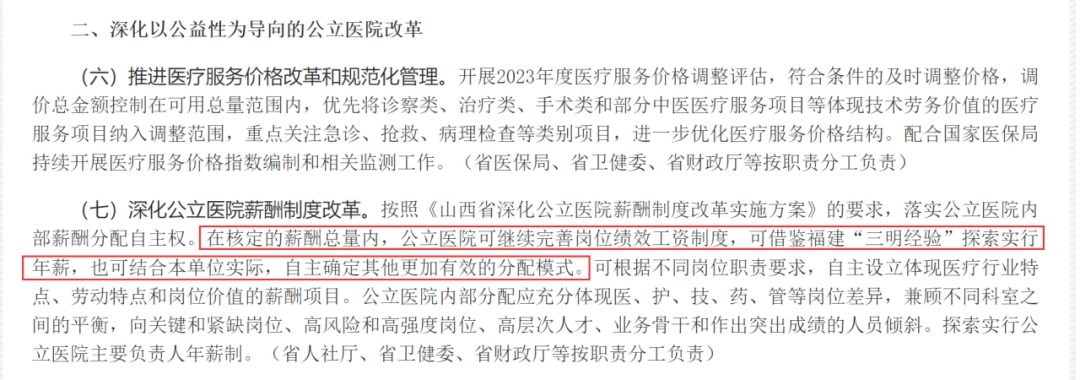 | [中医][图文]余艳红已担任国家中医 |
 | [中医]国务院办公厅关于印发中医药 |
 | [中医]中医院学科专科学术影响力排 |
 | [中医][图文]国家中医药管理局党组 |
 | [中医][图文]王永炎院士:做立大志 |
 | [中医][组图]喜讯!广东新增1名国医 |
 | [中医]2022年全国名老中医药专家传 |
 | [中医][图文]余艳红:充分发挥中医 |
 | [社会][图文]奇迹!美国男子接受 |
 | [名家医案]李晶教授治疗复发性口腔溃 |
 | [女性保健][组图]和男朋友去泡温泉后 |
 | [方药研用][组图]治疗口腔溃疡潜力中 |
 | [纪检]划重点:中纪委点名带金销 |
 | [医药][图文]广州医科大学纪委书 |
 | [女性保健]痛经是什么原因?切勿“习 |
 | [优生优育]小儿便秘,中医治疗有妙招 |
中山大学苏薇薇:中药化橘红在防治新型冠状病毒肺炎中的应用前景
|
文章导读:化橘 红是岭南特色中药,在呼吸系统疾病的防治中有悠久的应用历史。黄酮类化合物是化橘 红中的主要活性成分。目前,化橘 红已被列入新型冠状病毒肺 炎诊疗组方用药。然而,化橘 红防治呼吸系统疾病的功效和机制尚未被系统综述。 本文系统地总结了化橘 红及其活性成分柚皮苷在止咳、化痰、改善肺功能、缓解急性肺损伤及肺纤维化、增强抗病毒免疫应答方面的作用,为其临床应用提供参考 。 |
广东省应用型科技研发专项资金项目(No.2015B020234004;No.2016B020239003)
0 Introduction
Corona Virus Disease 2019 (COVID-19) is rapidly becoming a huge challenge for the global public health system due to its strong infectivity and no specific drug treatment [1]. To date, most COVID-19 infected patients have developed clinical symptoms such as fever, dry cough, fatigue, and dyspnea. Some severe cases have developed various fatal complications including acute respiratory distress syndrome, septic shock, metabolic acidosis, and coagulation dysfunction [2]. Clinical imaging showed that multiple small patchy shadows and interstitial changes appeared in lung tissue (especially evident in the lung periphery zone) in the early stages of COVID-19 infection. Subsequently, multiple ground glass infiltration and infiltration shadows could be observed in the lung tissue, as well as parenchymal lesions in severe cases [3]. The latest autopsy results show that the small airways and alveoli of the dead patients contain a large amount of viscous secretions and cause pulmonary embolism, which is the main cause of death [4]. It can be seen that the damage of COVID-19 to the human body is multifaceted, among which the respiratory system is the most serious, including pulmonary hypofunction and acute lung injury [5]. Therefore, while antiviral and preventing inflammatory storms, how to improve lung function, promote sputum excretion, and alleviate acute lung injury has become a new hot spot in clinical prevention and treatment of COVID-19.
Traditional Chinese medicine (TCM) has played an important role in the prevention and treatment of COVID-19 [6]. Exocarpium Citri grandis (ECG, called Huajuhong in Chinese) is the dried epicarp of Citrus grandis ‘Tomentosa’ which originated from Huazhou town in Guangdong province, southern China [7]. It has been used as folk herbal medicine in the treatment of respiratory diseases for hundreds of years in China, and contained flavonoids (especially naringin) have been proved to be the primary active components [8-10]. Our preliminary studies have revealed that ECG possessed excellent antitussive, expectorant, asthmatic [10] and anti-inflammatory effects [11]. Its antitussive effects are not associated with the central nervous system. Its antitussive efficacy does not depend on the C fibers in the trachea but are related to the discharge of rapid adaptation receptors (RARs) [12]. Meanwhile, toxicological studies suggested that ECG has no obvious toxic and side effects on the nervous system, cardiovascular system and respiratory system of experimental animals [13].
Systematic chemical profiling analysis revealed that naringin is the primary flavonoid in ECG [7, 14]. Naringin (naringenin-7-O-rhamnoglucoside) is a flavanone glycoside widely distributed in plant origin food [15]. Evidence from numerous studies supports that naringin possess pharmacological efficacies for the treatment of multiple illnesses [16]. Besides, naringin and its metabolite naringenin were systematically evaluated for the therapeutic effects of respiratory diseases [8]. Both were found to be effective in relieving cough, phlegm and pulmonary inflammation [17-19]. Moreover, the efficacy of naringin against Severe Acute Respiratory Syndromes (SARS) was also documented (Chinese patent: ZL03126908.7).
Recently, ECG has been listed in a TCM formula in Guideline for the diagnosis and treatment of COVID-19 (Sixth Edition) issued by National Health Commission of the People’s Republic of China. In this review, we summarized the efficacies of ECG in antitussive, expectorant, improving lung function, alleviating acute lung injury, attenuating pulmonary fibrosis, and enhancing antiviral immune response, to show their application prospect in the prevention and treatment of COVID-19.
1 Application prospect of ECG against COVID-19
1.1 Antitussive efficacy
ECG and naringin were found to exert significant antitussive effects on guinea pig pathological cough caused by smoking and ovarian albumin mediated guinea pig cough variant asthma [20, 21].
Gao et al. investigated the antitussive mechanism of naringin in a guinea pig cough model [17]. Naringin was found to be a peripheral antitussive. Further studies suggested that the mechanism of action of naringin did not associate with either the sensory neuropeptides system or the modulation of ATP-sensitive K+ channels. Naringin is considered to exhibit its peripheral antitussive efficiency through rapidly adapting receptors (RARs), which were the main afferent nerve fibers to stimulate cough [22]. Shi et al. evaluated the relaxant effect of naringin on rat tracheal smooth muscle by measuring muscular tension with a mechanical recording system in rat tracheal rings [23]. Naringin was observed to relax tracheal smooth muscle through opening big conductance Ca2+-activated K+ channel, which mediates plasma membrane hyperpolarization and reduces Ca2+ influx. Obtained results revealed the therapeutic potential of naringin against cough variant asthma.
1.2 Expectorant efficacy
Naringin has a regulating effect on mucus and serous components in sputum [24, 25]. On the one hand, naringin could significantly inhibit the synthesis and secretion of rat airway mucin MUC5AC induced by lipopolysaccharide (LPS) and the proliferation of airway epithelial goblet cells, while significantly inhibit the high secretion of mucin induced by epidermal growth factor [24]. On the other hand, the expression and function of cystic fibrosis transmembrane conductance regulator (CFTR) in the basal parietal membrane promotes the secretion of Cl- to the airway cavity, and then activates aquaporin (AQP) through osmotic pressure to promote the secretion of serous fluid in the airway, while up-regulating the expression of AQP1 and AQP5 inhibited by LPS and PM2.5 [25].
1.3 Improving lung function
ECG and naringin was proved to improve lung function and regulate pulmonary secretion [8]. Shi et al. revealed that naringin was found to improve lung function in mice with lung injury caused by cigarettes and PM2.5 [26]. Naringin could increase dynamic lung compliance, decrease static lung compliance, reduce lung resistance, increase peak expiratory flow rate, increase FEV20/FVC, and improve total lung air volume. These results suggest that naringin can not only improve the elasticity of respiratory muscles and affect elastic resistance, but also increase the size of the respiratory tract and reduce airway resistance.
1.4 Alleviating acute lung injury
Naringin possesses significant inhibitory effect on LPS-induced acute lung inflammation [27-29] . In addition, naringin also significantly inhibits cigarette smoke-induced symptoms of chronic obstructive pulmonary disease (COPD) such as chronic airway inflammation, high secretion of mucus, cough hyperresponsiveness, and airway hyperresponsiveness [19, 20]. On the one hand, naringin could significantly inhibit the level of pro-inflammatory factor interleukin 8 (IL-8) in alveolar lavage fluid, reduces neutrophil infiltration, inhibits the decrease of anti-inflammatory factor interleukin 10 (IL-10), and promotes expression of ALX receptors. On the other hand, by regulating the release of nitric oxide and metabolism of pro-oxidant homocysteine, naringin could reduce lung inflammation and damage to lung tissue, as well as promote inflammation resolution [30].
1.5 Attenuating pulmonary fibrosis
Pulmonary fibrosis is a severe diffuse pulmonary inflammatory disease caused by a variety of causes. Its pathogenesis includes damage to alveolar epithelial cells, aggregation and activation of inflammatory cells, apoptosis, fibroblast proliferation, and collagen production [31]. Chen et al. evaluates protective effects of naringin against paraquat-induced acute lung injury and pulmonary fibrosis in mice. Results showed that naringin could significantly reduce the contents of TNF-α, TGF-β1, MMP-9, TIMP-1, HYP and MDA, and significantly increase the activities of several antioxidant enzymes (SOD, GSH-Px, HO-1), suggesting that naringin had effective protection against paraquat-induced acute lung injury and pulmonary fibrosis [27].
1.6 Enhancing antiviral immune response
3-(4′-Hydroxyphenyl) propionic acid (HPPA) is the primary metabolite of flavanoids catabolized by gut microbiota [32]. HPPA could can enhance the type I interferon signal, enhance the immune response of macrophages and regulate the function of antigen presenting cells and T cells, thereby opening up and enhancing the entire body. The antiviral immune response can enhance type I interferon signaling to prevent influenza infection before infection [33, 34]. Mediated by gut microbiota, naringin is eventually degraded into HPPA [35, 36]. Hence, naringin intake probably can enhancing antiviral immune response.
2 Conclusions
In summary, ECG is a pharmacologically active folk herbs for the treatment of respiratory diseases. Contained flavonoids have been assigned to be the primary active components, especially naringin. To be specific, its therapeutic efficacies in respiratory diseases drawn from the experimental results could be described above: (1) ECG and naringin are peripheral antitussive and probably exerts its efficiency through RARs. (2) ECG and naringin have regulating effects on both mucus and serous components in sputum. (3) ECG and naringin could improve lung function and regulate pulmonary secretion. (4) ECG and naringin could alleviate acute lung injury by inhibiting the secretion of pulmonary inflammatory factors and promote inflammation resolution. (5) ECG and naringin possess the therapeutic effects in attenuating pulmonary fibrosis. (6) ECG and naringin could enhance antiviral immune response through its catabolite 3-(4′-hydroxyphenyl) propionic acid. These results suggest that ECG, as well as its pharmacologically active compound naringin, have good application prospect in alleviating the respiratory symptoms caused by COVID-19.
参考文献
[1] Sohrabi, C.; Alsafi, Z.; O'Neill, N.; Khan, M.; Kerwan, A.; Al-Jabir, A., et al., World Health Organization declares Global Emergency: A review of the 2019 Novel Coronavirus (COVID-19) [J]. Int J Surg, 2020, 76: 71-76.
[2] Guan, W. J.; Ni, Z. Y.; Hu, Y.; Liang, W. H.; Ou, C. Q.; He, J. X., et al., Clinical characteristics of coronavirus disease 2019 in China [J]. N Engl J Med, 2020: 1-13.
[3] Xu, X.; Yu, C.; Qu, J.; Zhang, L.; Jiang, S.; Huang, D., et al., Imaging and clinical features of patients with 2019 novel coronavirus SARS-CoV-2 [J]. Eur J Nucl Med Mol Imaging, 2020: 1-6.
[4] Liu, Q.; Wang, R.; Qu, G.; Wang, Y.; Liu, P.; Zhu, Y., et al., Anatomy of a new coronavirus pneumonia death corpse [J]. Journal of Forensic Medicine, 2020, 36 (1): 1-3.
[5] Lai, C. C.; Shih, T. P.; Ko, W. C.; Tang, H. J.; Hsueh, P. R., Severe acute respiratory syndrome coronavirus 2 (SARS-CoV-2) and coronavirus disease-2019 (COVID-19): The epidemic and the challenges [J]. Int J Antimicrob Agents, 2020: 105924.
[6] Ren, J. L.; Zhang, A. H.; Wang, X. J., Traditional chinese medicine for COVID-19 treatment [J]. Pharmacol Res, 2020, 155: 104743.
[7] Li, P.; Liu, M.; Hu, J.; Su, W., Systematic chemical profiling of Citrus grandis 'Tomentosa' by ultra-fast liquid chromatography/diode-array detector/quadrupole time-of-flight tandem mass spectrometry [J]. J Pharm Biomed Anal, 2014, 90: 167-179.
[8] Li, P.; Wang, Y.; Wu, Z.; Peng, W.; Yang, C.; Nie, Y., et al., The pre-clinical studies of naringin,an innovative drug,derived from Citri Grandis Exocarpium (Huajuhong) [J]. Acta Scientiarum Naturalium Universitatis Sunyatseni, 2015, 54 (6): 1-5.
[9] Jiang, K.; Song, Q.; Wang, L.; Xie, T.; Wu, X.; Wang, P., et al., Antitussive, expectorant and anti-inflammatory activities of different extracts from Exocarpium Citri grandis [J]. J Ethnopharmacol, 2014, 156: 97-101.
[10] Li, P.; Ma, Y.; Wang, Y.; Su, W., Experimental studies on antitussive,expectorant and antiasthmatic effects of extract from Citrus grandis var.tomentosa [J]. China Journal of Chinese Materia Medica, 2006, 31 (16): 1350-1352.
[11] Li, P.; Ma, Y.; Yang, H.; Jia, Q.; Wang, Y.; Su, W., Anti-inflammatory effects of Exocarpium Citri grandis extract [J]. Chinese Traditional and Herbal Drugs, 2006, 37 (2): 251-253.
[12] Li, P.; Su, C.; Bi, F.; Wang, Y.; Peng, W.; Su, W. W., Study on antitussive effect and mechanism of Exocarpium Citri grandis extract [J]. Chinese Traditional and Herbal Drugs, 2008, 38 (2): 247-250.
[13] Li, P.; Wang, Y.; Peng, W.; Su, W., Safety pharmacological study of the effects of Exocarpium Citri grandis extract on central nervous system in mice [J]. Journal of Chinese Medicinal Materials, 2007, 30 (11): 1438-1439.
[14] Zeng, X.; Su, W.; Zheng, Y.; Liu, H.; Li, P.; Zhang, W., et al., UFLC-Q-TOF-MS/MS-based screening and identification of flavonoids and derived metabolites in human urine after oral administration of Exocarpium Citri Grandis extract [J]. Molecules, 2018, 23 (4): 895.
[15] Yao, H.; Su, W.; Lin, L.; Pan, W.; Zeng, X.; Li, P., Comprehensive investigation into the interconversion of C-2 diastereomers of naringin [J]. Chirality, 2018, 30 (5): 652-660.
[16] Bharti, S.; Rani, N.; Krishnamurthy, B.; Arya, D. S., Preclinical evidence for the pharmacological actions of naringin: A review [J]. Planta Med, 2014, 80 (6): 437-451.
[17] Gao, S.; Li, P.; Yang, H.; Fang, S.; Su, W., Antitussive effect of naringin on experimentally induced cough in Guinea pigs [J]. Planta Med, 2011, 77 (1): 16-21.
[18] Lin, B.; Li, P.; Wang, Y.; Peng, W.; Wu, Z.; Su, W., et al., The expectorant activity of naringenin [J]. Pulm Pharmacol Ther, 2008, 21 (2): 259-263.
[19] Nie, Y.; Wu, H.; Li, P.; Luo, Y.; Long, K.; Xie, L., et al., Anti-inflammatory effects of naringin in chronic pulmonary neutrophilic inflammation in cigarette smoke-exposed rats [J]. J Med Food, 2012, 15 (10): 894-900.
[20] Luo, Y.; Zhang, C.; Li, P.; Nie, Y.; Wu, H.; Shen, J., et al., Naringin attenuates enhanced cough, airway hyperresponsiveness and airway inflammation in a guinea pig model of chronic bronchitis induced by cigarette smoke [J]. Int Immunopharmacol, 2012, 13 (3): 301-307.
[21] Jiao, H.; Su, W.; Li, P.; Liao, Y.; Zhou, Q.; Zhu, N., et al., Therapeutic effects of naringin in a guinea pig model of ovalbumin-induced cough-variant asthma [J]. Pulm Pharmacol Ther, 2015, 33: 59-65.
[22] Widdicombe, J., Neuroregulation of cough: implications for drug therapy [J]. Curr Opin Pharmacol, 2002, 2 (3): 256-263.
[23] Shi, R.; Xu, J. W.; Xiao, Z. T.; Chen, R. F.; Zhang, Y. L.; Lin, J. B., et al., Naringin and Naringenin Relax Rat Tracheal Smooth by Regulating BKCa Activation [J]. J Med Food, 2019, 22 (9): 963-970.
[24] Nie, Y.; Wu, H.; Li, P.; Xie, L.; Luo, Y.; Shen, J., et al., Naringin attenuates EGF-induced MUC5AC secretion in A549 cells by suppressing the cooperative activities of MAPKs-AP-1 and IKKs-IκB-NF-κB signaling pathways [J]. Eur J Pharmacol, 2012, 690 (1): 207-213.
[25] Shi, R.; Xiao, Z.; Zheng, Y.; Zhang, Y.; Xu, J.; Huang, J., et al., Naringenin regulates CFTR activation and expression in airway epithelial cells [J]. Cell Physiol Biochem, 2017, 44 (3): 1146-1160.
[26] Shi, R.; Su, W.-W.; Zhu, Z.-T.; Guan, M.-Y.; Cheng, K.-L.; Fan, W.-Y., et al., Regulation effects of naringin on diesel particulate matter-induced abnormal airway surface liquid secretion [J]. Phytomedicine, 2019, 63: 153004.
[27] Chen, Y.; Nie, Y.; Luo, Y.-l.; Lin, F.; Zheng, Y.; Cheng, G., et al., Protective effects of naringin against paraquat-induced acute lung injury and pulmonary fibrosis in mice [J]. Food Chem Toxicol, 2013, 58: 133-140.
[28] Liu, Y.; Wu, H.; Nie, Y.; Chen, J.; Su, W.; Li, P., Naringin attenuates acute lung injury in LPS-treated mice by inhibiting NF-κB pathway [J]. Int Immunopharmacol, 2011, 11 (10): 1606-1612.
[29] Chen, Y.; Wu, H.; Nie, Y.; Li, P.-b.; Shen, J.; Su, W., Mucoactive effects of naringin in lipopolysaccharide-induced acute lung injury mice and beagle dogs [J]. Environ Toxicol Pharmacol, 2014, 38 (1): 279-287.
[30] Li, P.; Liao, Y.; Liu, H.; Yun, S.; Li, P.; Su, W., Naringin's influence on the protein expressions in the lung tissues of cigarette smoke induced acute lung inflammation in mice by iTRAQ technology [J]. Acta Scientiarum Naturalium Universitatis Sunyatseni, 2017, 56 (4): 102-110.
[31] Meyer, K. C., Pulmonary fibrosis, part I: epidemiology, pathogenesis, and diagnosis [J]. Expert Rev Respir Med, 2017, 11 (5): 343-359.
[32] Chen, Z.; Zheng, S.; Li, L.; Jiang, H., Metabolism of flavonoids in human: A comprehensive review [J]. Curr Drug Metab, 2014, 15 (1): 48-61.
[33] Chen, T.; Wu, H.; He, Y.; Pan, W.; Yan, Z.; Liao, Y., et al., Simultaneously quantitative analysis of naringin and its major human gut microbial metabolites naringenin and 3-(4'-hydroxyphenyl) propanoic acid via stable isotope deuterium-labeling coupled with RRLC-MS/MS method [J]. Molecules, 2019, 24 (23): 4287.
[34] Steed, A. L.; Christophi, G. P.; Kaiko, G. E.; Sun, L.; Goodwin, V. M.; Jain, U., et al., The microbial metabolite desaminotyrosine protects from influenza through type I interferon [J]. Science, 2017, 357 (6350): 498-502.
[35] Chen, T.; Su, W.; Yan, Z.; Wu, H.; Zeng, X.; Peng, W., et al., Identification of naringin metabolites mediated by human intestinal microbes with stable isotope-labeling method and UFLC-Q-TOF-MS/MS [J]. J Pharm Biomed Anal, 2018, 161: 262-272.
[36] Zeng, X.; Yao, H.; Zheng, Y.; Chen, T.; Peng, W.; Wu, H., et al., Metabolite profiling of naringin in rat urine and feces using stable isotope-labeling-based liquid chromatography-mass spectrometry [J]. J Agric Food Chem, 2020, 68 (1): 409-417.
来源:中国科技论文在线,更多链接:http://www.paper.edu.cn/releasepaper/content/202003-196
小编将其翻译成中文,它大概是这样的,注意下文的ECG指的就是“化橘红”。
0 引言
由于其强大的传染性和无特效的药物治疗方法,2019年冠状病毒病(COVID-19)正迅速成为全球公共卫生系统的一项巨大挑战。迄今为止,大多数感染COVID-19的患者已出现临床症状,例如发烧,干咳,疲劳和呼吸困难。一些严重的病例发展出各种致命的并发症,包括急性呼吸窘迫综合征,败血性休克,代谢性酸中毒和凝血功能障碍[2]。临床成像显示,在COVID-19感染的早期阶段,肺组织中出现了多个小的斑块状阴影和间质变化(尤其是在肺外围区域很明显)。随后,在严重的情况下,在肺组织以及实质病变中可以观察到多个毛玻璃浸润和浸润阴影。最新的尸检结果表明,死亡患者的小气道和肺泡含有大量粘性分泌物,并引起肺栓塞,这是死亡的主要原因[4]。可以看出,COVID-19对人体的损害是多方面的,其中呼吸系统最为严重,包括肺功能低下和急性肺损伤[5]。因此,在抗病毒和预防炎性风暴的同时,如何改善肺功能,促进痰排泄和减轻急性肺损伤已成为临床预防和治疗COVID-19的新热点。可以看出,COVID-19对人体的损害是多方面的,其中呼吸系统最为严重,包括肺功能低下和急性肺损伤[5]。因此,在抗病毒和预防炎性风暴的同时,如何改善肺功能,促进痰排泄和减轻急性肺损伤已成为临床预防和治疗COVID-19的新热点。可以看出,COVID-19对人体的损害是多方面的,其中呼吸系统最为严重,包括肺功能低下和急性肺损伤[5]。因此,在抗病毒和预防炎性风暴的同时,如何改善肺功能,促进痰排泄和减轻急性肺损伤已成为临床预防和治疗COVID-19的新热点。
中药(TCM)在预防和治疗COVID-19中发挥了重要作用[6]。大果外果皮(ECG,中文称为华举红 //化橘红)是大果皮“ Tomentosa”的干果皮,其起源于中国南方的广东省华州镇 //化州市[7]。在中国,它已被用作民间草药以治疗呼吸道疾病已有数百年历史,其中所含的黄酮类化合物(尤其是柚皮苷)已被证明是主要的活性成分[8-10]。我们的初步研究表明,心电图具有出色的镇咳,祛痰,平喘[10]和抗炎作用[11]。它的镇咳作用与中枢神经系统无关。它的镇咳功效不依赖于气管中的C纤维,而与快速适应受体(RAR)的释放有关[12]。同时,毒理学研究表明,心电图对实验动物的神经系统,心血管系统和呼吸系统没有明显的毒性和副作用[13]。
系统化学分析表明,柚皮苷是心电图中主要的类黄酮[7,14]。柚皮苷(naringenin-7-O-鼠李糖苷)是一种广泛存在于植物来源食品中的黄烷酮糖苷[15]。大量研究的证据支持柚皮苷具有治疗多种疾病的药理学功效[16]。此外,系统地评估了柚皮苷及其代谢产物柚皮苷对呼吸系统疾病的治疗效果[8]。发现两者均能有效缓解咳嗽,痰和肺部炎症[17-19]。此外,还记录了柚皮苷对严重急性呼吸系统综合症(SARS)的疗效(中国专利:ZL03126908.7)。
最近,在中华人民共和国国家卫生委员会发布的《诊断和治疗COVID-19指南》(第六版)的中医公式中列出了ECG。在这篇综述中,我们总结了心电图在镇咳,祛痰,改善肺功能,减轻急性肺损伤,减轻肺纤维化和增强抗病毒免疫应答方面的功效,以显示其在预防和治疗COVID-19中的应用前景。
1 ECG针对COVID-19的应用前景
1.1 镇咳药效
发现心电图和柚皮苷对吸烟和卵巢白蛋白介导的豚鼠咳嗽变异性哮喘引起的豚鼠病理性咳嗽具有明显的镇咳作用[20,21]。
高等。研究了柚皮素在豚鼠咳嗽模型中的镇咳作用[17]。发现柚皮苷是一种外周镇咳药。进一步的研究表明,柚皮苷的作用机制与感觉神经肽系统或ATP敏感性K +通道的调节均无关。柚皮苷被认为通过快速适应性受体(RAR)表现出其外周镇咳作用,RAR是刺激咳嗽的主要传入神经纤维[22]。Shi等。通过使用机械记录系统测量大鼠气管环中的肌肉张力,评估柚皮苷对大鼠气管平滑肌的松弛作用[23]。观察到柚皮苷通过打开大电导的Ca2 +激活的K +通道来松弛气管平滑肌,介导质膜超极化并减少Ca2 +流入。所得结果揭示了柚皮苷对咳嗽变异性哮喘的治疗潜力。
1.2 祛痰功效
柚皮苷对痰液中的粘液和浆液成分具有调节作用[24,25]。一方面,柚皮苷可以显着抑制脂多糖(LPS)诱导的大鼠气道黏蛋白MUC5AC的合成和分泌以及气道上皮杯状细胞的增殖,同时显着抑制表皮生长因子诱导的黏蛋白的高分泌[24]。另一方面,囊性纤维化跨膜电导调节剂(CFTR)在基底顶膜中的表达和功能促进Cl-向气道腔的分泌,然后通过渗透压激活水通道蛋白(AQP)以促进浆液的分泌。气道中的液体,同时上调LPS和PM2.5抑制的AQP1和AQP5的表达[25]。
1.3 改善肺功能
事实证明,心电图和柚皮苷可改善肺功能并调节肺分泌[8]。Shi等。揭示了柚皮苷被发现可以改善香烟和PM2.5引起的肺损伤小鼠的肺功能[26]。柚皮苷可增加动态肺顺应性,降低静态肺顺应性,降低肺阻力,增加呼气峰值流速,增加FEV20 / FVC并改善总肺气量。这些结果表明,柚皮苷不仅可以改善呼吸肌的弹性并影响弹性阻力,而且可以增加呼吸道的大小并降低气道阻力。
1.4 减轻急性肺损伤
柚皮苷对脂多糖诱导的急性肺部炎症具有明显的抑制作用[27-29]。此外,柚皮苷还显着抑制香烟烟雾引起的慢性阻塞性肺疾病(COPD)症状,例如慢性气道炎症,粘液分泌过多,咳嗽反应过度和气道反应过度[19,20]。一方面,柚皮苷可以显着抑制肺泡灌洗液中促炎因子白介素8(IL-8)的水平,减少中性粒细胞浸润,抑制抗炎因子白介素10(IL-10)的降低,并促进ALX受体的表达。另一方面,柚皮苷通过调节一氧化氮的释放和促氧化剂高半胱氨酸的代谢,可以减轻肺部炎症和对肺组织的损害,
1.5 减轻肺纤维化
肺纤维化是一种由多种原因引起的严重的弥漫性肺炎性疾病。其发病机理包括对肺泡上皮细胞的损害,炎症细胞的聚集和活化,细胞凋亡,成纤维细胞增殖和胶原蛋白的产生[31]。Chen等。评估柚皮苷对百草枯引起的小鼠急性肺损伤和肺纤维化的保护作用。结果表明,柚皮苷可以显着降低TNF-α,TGF-β1,MMP-9,TIMP-1,HYP和MDA的含量,并显着提高几种抗氧化酶(SOD,GSH-Px,HO-1)的活性。 ,表明柚皮苷对百草枯引起的急性肺损伤和肺纤维化具有有效的保护作用[27]。
1.6 增强抗病毒免疫反应
3-(4'-羟基苯基)丙酸(HPPA)是肠道菌群分解代谢的类黄酮的主要代谢物[32]。HPPA可以增强I型干扰素信号,增强巨噬细胞的免疫反应,调节抗原呈递细胞和T细胞的功能,从而开放并增强整个身体。抗病毒免疫反应可以增强I型干扰素信号传导,从而在感染前预防流感感染[33,34]。柚皮素在肠道菌群的介导下最终降解为HPPA [35,36]。因此,摄入柚皮苷可能可以增强抗病毒免疫反应。
2 结论
总之,ECG是用于治疗呼吸道疾病的具有药理活性的民间草药。包含的类黄酮已被指定为主要的活性成分,尤其是柚皮苷。具体而言,从实验结果得出的其对呼吸系统疾病的治疗效果可描述如下:(1)ECG和柚皮苷是外周镇咳药,可能通过RAR发挥其功效。(2)ECG和柚皮苷对痰液中的黏液和浆液成分都有调节作用。(3)心电图和柚皮苷可以改善肺功能,调节肺分泌。(4)ECG和柚皮苷可通过抑制肺炎性因子的分泌并促进炎症消退来减轻急性肺损伤。(5)ECG和柚皮苷具有减轻肺纤维化的治疗作用。(6)ECG和柚皮苷可通过其分解代谢物3-(4'-羟苯基)丙酸增强抗病毒免疫反应。这些结果表明,ECG及其药理活性化合物柚皮苷,在减轻由COVID-19引起的呼吸道症状方面具有良好的应用前景。
参考文献
[1] Sohrabi,C .;Z.Alsafi;奥尼尔(N. 可汗 A. Kerwan;世界卫生组织Al-Jabir等人宣布全球紧急情况:对2019年新型冠状病毒(COVID-19)的回顾[J]。国际外科杂志,2020,76:71-76。
[2]关文杰;Ni,ZY; 胡Y;梁文浩;u,CQ;何建新,等。2019年中国冠状病毒病临床特征[J]。英格兰医学杂志,2020:1-13。
[3] Xu,X .;于成 曲建。张丽; 江南 Huang D,et al。,2019新型冠状病毒SARS-CoV-2患者的影像学和临床特征[J]。Eur J Nucl医学分子影像学,2020:1-6。
[4]刘强;王荣; Qu,G .; 王Y;刘鹏; 朱Y,等,新型冠状病毒性肺炎死亡尸体的解剖[J]。法医杂志,2020,36(1):1-3。
[5]赖志强;Shih,TP;Ko,WC;汤慧君 Hsueh,PR,严重急性呼吸系统综合症冠状病毒2(SARS-CoV-2)和冠状病毒病-2019(COVID-19):流行病和挑战[J]。Int J Antimicrob Agents,2020年:105924。
[6]任建良;张啊 王新杰,中医治疗COVID-19的研究[J]。Pharmacol Res,2020,155:104743。
[7]李鹏。刘敏;胡建 Su,W.,超快速液相色谱/二极管阵列检测器/四极杆飞行时间串联质谱法对柑橘“ Tomentosa”的系统化学分析[J]。J医药生物医学肛门杂志,2014,90:167-179。
[8]李鹏。王Y;吴中; 彭威;杨昌 Nie,Y。等,新型药物柚皮苷的临床前研究[J]。Sunyatseni大学学报(自然科学版),2015,54(6):1-5。
[9] Jiang,K .; 宋Q. 王力; 谢,T。吴X. Wang,P.等,大果外皮提取物的镇咳,祛痰和抗炎活性[J]。民族药物杂志,2014,156:97-101。
[10]李鹏。马Y 王Y;Su,W.,柑桔提取物的镇咳,抑喘和平喘作用的实验研究[J]。中国中药杂志,2006,31(16):1350-1352。
[11]李鹏。马Y 杨华; 贾强;王Y;Su,W.,大果外皮提取物的抗炎作用[J]。中草药,2006,37(2):251-253。
[12]李鹏。Su,C .; Bi,F .; 王Y;彭威;Su,WW,外果皮提取物的镇咳作用及其作用机理研究[J]。西北植物学报,2004,23(1):155-159。中草药,2008,38(2):247-250。
[13]李鹏。王Y;彭威;苏文武,大果外皮提取物对小鼠中枢神经系统影响的安全药理研究[J]。中药材,2007,30(11):1438-1439。
[14]曾宪X;Su,W .; 郑Y 刘华; 李鹏; Zhang W.等,口服大果外皮提取物后基于UFLC-Q-TOF-MS / MS的筛选和鉴定人尿中的黄酮类和衍生代谢物[J]。分子,2018,23(4):895。
[15] Yao,H .; Su,W .; 林琳; Pan,W .; 曾宪 李鹏飞,柚皮苷C-2非对映异构体相互转化的综合研究[J]。手性,2018,30(5):652-660。
[16] Bharti,S .;N.拉尼;B.克里希那穆提;Arya,DS,柚皮苷的药理作用的临床前证据:综述[J]。Planta Med,2014,80(6):437-451。
[17]高升。李鹏; 杨华; 方S. Su,W.,柚皮苷对豚鼠实验性咳嗽的镇咳作用[J]。Planta Med,2011,77(1):16-21。
[18] Lin,B .;李鹏; 王Y;彭威;吴中; Su,W.等,柚皮苷的祛痰活性[J]。Pulm Pharmacol Ther,2008,21(2):259-263。
[19] Nie,Y .; 吴华; 李鹏; 罗Y。长,K。Xie L.等,柚皮苷对香烟烟雾暴露大鼠慢性肺中性粒细胞炎症的抗炎作用[J]。医学食品杂志,2012,15(10):894-900。
[20]罗Y。张成; 李鹏; 聂,Y。吴华; Shen,J.,等。,柚皮苷减轻香烟烟雾诱发的慢性支气管炎豚鼠模型中咳嗽,气道高反应性和气道炎症的作用[J]。国际免疫药学杂志,2012,13(3):301-307。
[21]焦华;Su,W .; 李鹏; 廖Y;周强;朱娜等,柚皮苷对卵清蛋白诱发的咳嗽变异性哮喘豚鼠的治疗作用[J]。Pulm Pharmacol Ther,2015,33:59-65。
[22] Widdicombe,J。,《咳嗽的神经调节:对药物治疗的影响》 [J]。Curr Opin Pharmacol,2002,2(3):256-263。
[23] Shi,R .; 徐建伟; 肖中通 陈,RF;张亚兰; Lin,JB,et al。,Naringin和Naringenin通过调节BKCa的活化来松弛大鼠气管的平滑度[J]。J Med食品,2019,22(9):963-970。
[24] Nie,Y .; 吴华; 李鹏; 谢琳; 罗Y。Shen,J.,et al。,柚皮苷通过抑制MAPKs-AP-1和IKKs-IκB-NF-κB信号通路的协同活性来减弱A549细胞中EGF诱导的MUC5AC分泌[J]。Eur J Pharmacol,2012,690(1):207-213。
[25] Shi,R .; 肖Z. 郑Y 张Y 徐建 Huang,J.,et al。,Naringenin调节气道上皮细胞的CFTR活化和表达[J]。细胞生理生化,2017,44(3):1146-1160。
[26] Shi,R .; Su,W.-W .; 朱正德; 关明Y; 郑K.-L .; Fan,W.-Y。等,柚皮苷对柴油颗粒物诱导的气道表面液异常分泌的调节作用[J]。植物药,2019,63:153004。
[27]陈Y。聂,Y。罗永升; 林峰;郑Y Cheng,G。等,柚皮苷对百草枯诱发的小鼠急性肺损伤和肺纤维化的保护作用[J]。食品化学毒物,2013,58:133-140。
[28]刘洋。吴华; 聂,Y。陈建 Su,W .; Li,P.,Naringin通过抑制NF-κB途径减轻LPS治疗小鼠的急性肺损伤[J]。Int Immunopharmacol,2011,11(10):1606-1612。
[29]陈Y。吴华; 聂,Y。Li,P.-b .; 沉建 Su,W.,柚皮苷对脂多糖诱导的急性肺损伤小鼠和beagle犬的黏液活性[J]。环保药理学报,2014,38(1):279-287。
[30]李鹏。廖Y;刘华; Yun,S .; 李鹏; Su,W.,Naringin通过iTRAQ技术对香烟烟雾引起的小鼠急性肺部炎症中肺组织蛋白质表达的影响[J]。Sunyatseni大学学报(自然科学版),2017,56(4):102-110。
[31] Meyer,KC,肺纤维化,第一部分:流行病学,发病机制和诊断[J]。呼吸生物学专家,2017,11(5):343-359。
[32] Chen,Z .;郑胜 李琳; 姜恒华,人体内类黄酮代谢研究综述[J]。药物代谢杂志,2014,15(1):48-61。
[33] Chen,T .; 吴华; 他,Y。Pan,W .; 阎志; 廖Y,等,稳定同位素氘标记-RRLC-MS / MS法同时定量分析柚皮苷及其主要人体肠道代谢产物柚皮苷和3-(4'-羟基苯基)丙酸[J] 。分子,2019,24(23):4287。
[34]亚利桑那州的斯特德;克里斯托菲(GP)GE Kaiko;Sun,L .;Goodwin,VM;Jain,U。等,微生物代谢产物脱氨基酪氨酸可通过I型干扰素预防流感[J]。科学,2017,357(6350):498-502。
[35] Chen T .;Su,W .; 阎志; 吴华; 曾宪 Peng W.等,稳定同位素标记法和UFLC-Q-TOF-MS / MS鉴定人肠道微生物介导的柚皮苷代谢物[J]。J药物生物医学肛门,2018,161:262-272。
[36] Zeng,X .;姚华;郑Y 陈天 彭威;Wu,H.,et al。,基于稳定同位素标记的液相色谱-质谱法研究大鼠尿液和粪便中柚皮苷的代谢谱[J]。农业食品化学学报,2020,68(1):409-417。
|
|




















